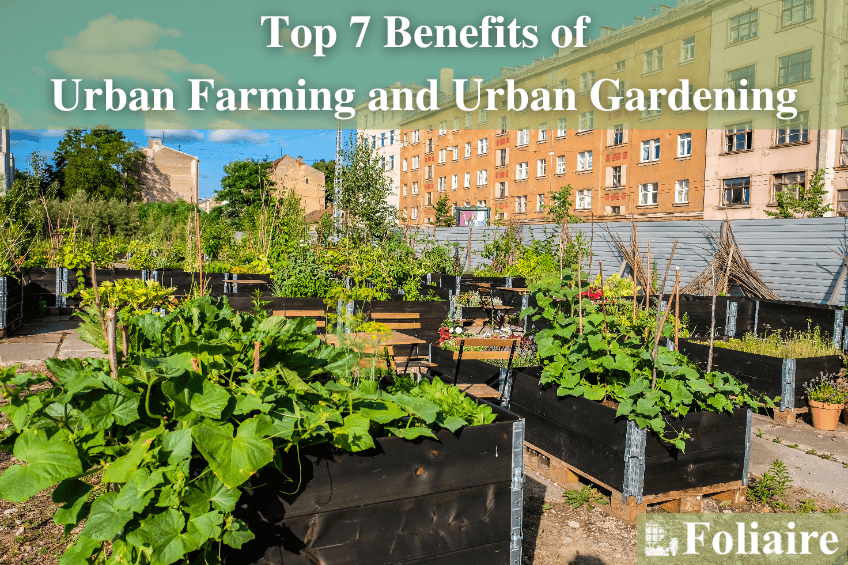City Blooming Things To Know Before You Get This
What Does City Blooming Mean?
Table of ContentsSee This Report on City BloomingWhat Does City Blooming Do?What Does City Blooming Do?5 Simple Techniques For City BloomingThe Basic Principles Of City Blooming
Nature has unbelievable results on our physical and psychological wellness, so it's not a surprise that a simple delicious on a desktop computer or some potted herbs on a windowsill can instantly improve a room. Take those plants a step further, and you'll go across into the territory of metropolitan horticulture, which brings even much more advantages to individuals and neighborhoods alike.What Are Urban Gardens?Urban horticulture, often understood ascity gardening, is defined as "the process of growing green areas in metropolitan setups. "It includes a range of tasks from urban farming to outdoor patio gardens to community gardens - urban gardening. Urban yards can be tended by people, teams, companies, or organizations. The amount and selection of food grown can differ commonly, in addition to the size of the job itself, yet urban gardening initiatives are all rooted in a city setting.
Whether they contain a collection of pots on a porch or a collection of stories on a vacant whole lot, these yards supply even more than food, providing a host of environmental, financial, and social benefits. Since produce is grown in local setups in contrast to far-away farms, metropolitan horticulture decreases transportation requirements, therefore minimizing carbon emissions.
What Does City Blooming Mean?
Lasting and organic farming eliminates or minimizes a lot of the environmental harm that would certainly be sustained by industrial farming approaches. Environment-friendly rooms in cities help minimize the metropolitan warm island impact. Urban farming stimulates regional economies and sustains regional food manufacturers. Area horticulture projects commonly use food at little or no expense, which helps bolster food spending plans and boost food safety. Urban yards can be devices of social change that address injustices, systemic bigotry, and neighborhood development concerns. Right here at Appetite For Adjustment, we make use of food as a device to construct health and wellness, wealth, and social adjustment in North Minneapolis. We bring people with each other to find out, cook, eat, and expand food, developing modification that lasts.
Together, we can develop well-rooted and flourishing change!.

The key lesson we, when again, need to learn is that cities are not divorced from nature. They belong of the bigger biome in which they're situated. As planners and developers, we are educated to assume holistically. While these areas of study promote cities as helpful, no city is best not also close, and the vulnerabilities and interconnections of the international supply chain has actually affected all of us in unpredicted means.
The Single Strategy To Use For City Blooming
I will take a look at models from the past that promoted city yards and gardeners, and reveal what worked and what did not. I will go over the chances and challenges of being an urban garden enthusiast, what is required to establish up a yard of your very own, and what regulations and criteria stand in the way of making cities better at advertising urban yards.
The quantity of time lost reaching and from typical work environments has actually been well recorded. One notable research wrapped up that before the pandemic, Americans threw away a standard of 54 hours a year commuting. The gathered negative impacts of pollution and stress that result from commuting alone by cars and truck as a lot of Americans do are substantial.
The capability to come to the workplace for collaboration and culture, and remain home for focused work is an idea that saves time, is better for the atmosphere and is a smarter usage of minimal sources. What hasn't yet taken hold is the connection in between these changes in habits and exactly how cities might respond.
Not known Facts About City Blooming
What are the health impacts of our cities all of a sudden overdesigned for check my blog cars and trucks? Just how can our city framework (roads, energies) execute much better, not just as conduits to move individuals and items, yet as factors to all-natural systems? Urban phenomena such as smog, inadequate water top quality and the 'warmth island result' can be minimized by greening our roads, electrifying our lorries and planting our car park.
In a recent post in the Wall Street Journal, Richard Florida reviewed the phenomenon of 'zoom cities,' which draw in remote workers by developing a photo of a better of life (home and garden). He composed: "For cities, remote work transforms the emphasis from tempting business with special bargains to enticing talent with services and services
, and roof gardening. This indicates you can manage the location where you expand the food, and worry much less about environmental problems like dry spell or chilly climate. https://www.pearltrees.com/cityblooming#item659419097.
City Blooming - The Facts
Growing mass-produced food with standard farming approaches takes a whole lot out of the world. Beyond the numerous resources that are made use of on the ranch, the food then has to be delivered where it is grown to a shop near you. That calls for melting a great deal of fuel. Typically in the united state, food is currently moved between 1,500 and 2,500 miles to get to the customer.
